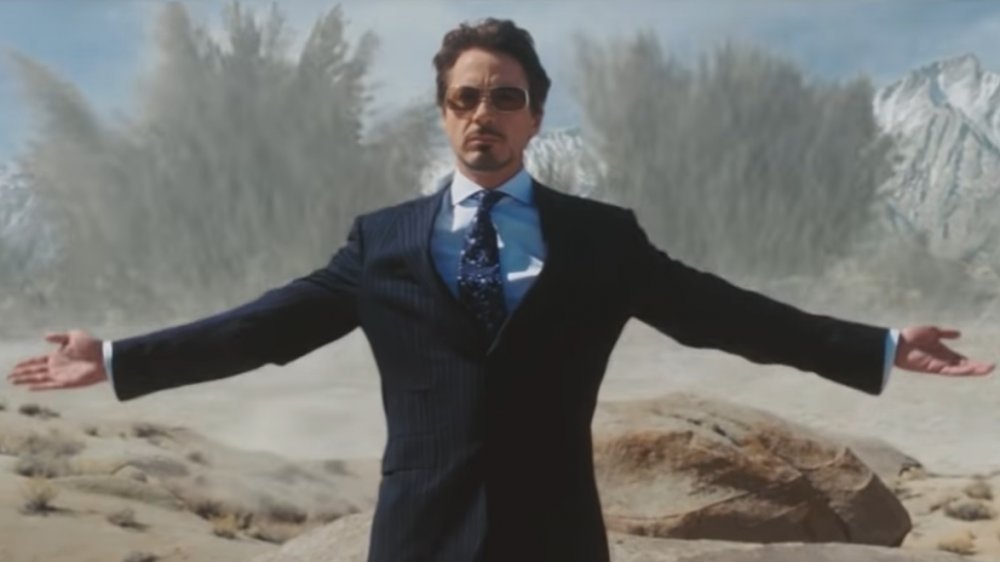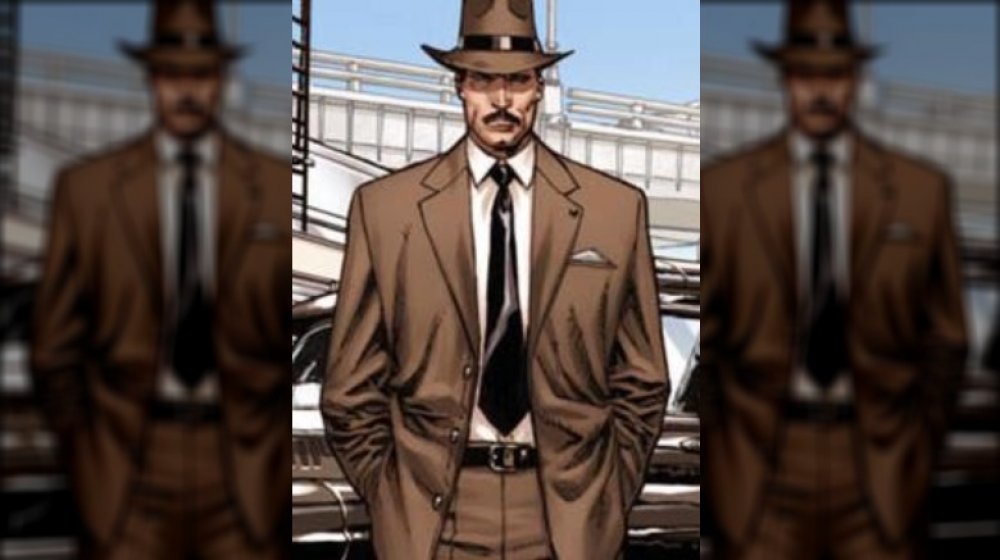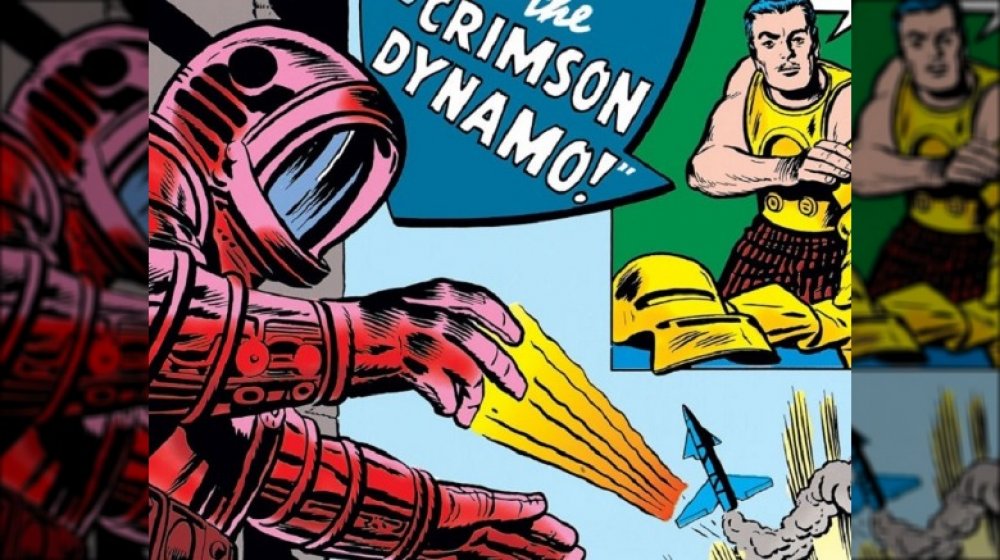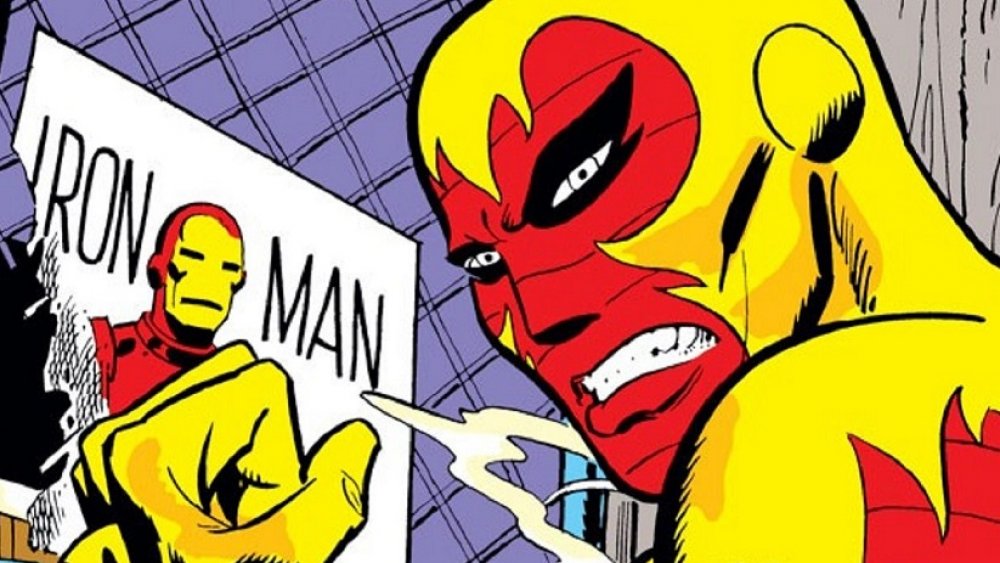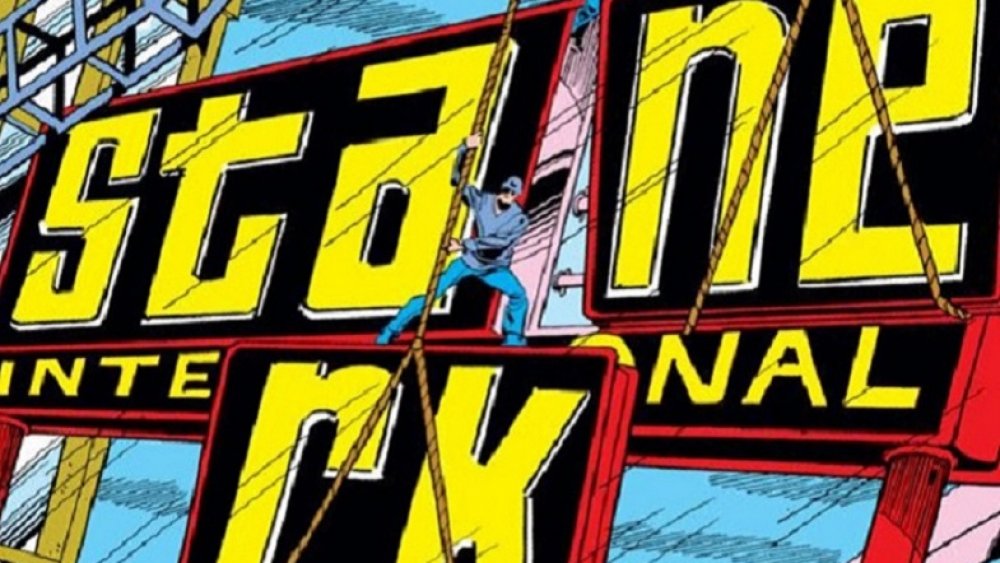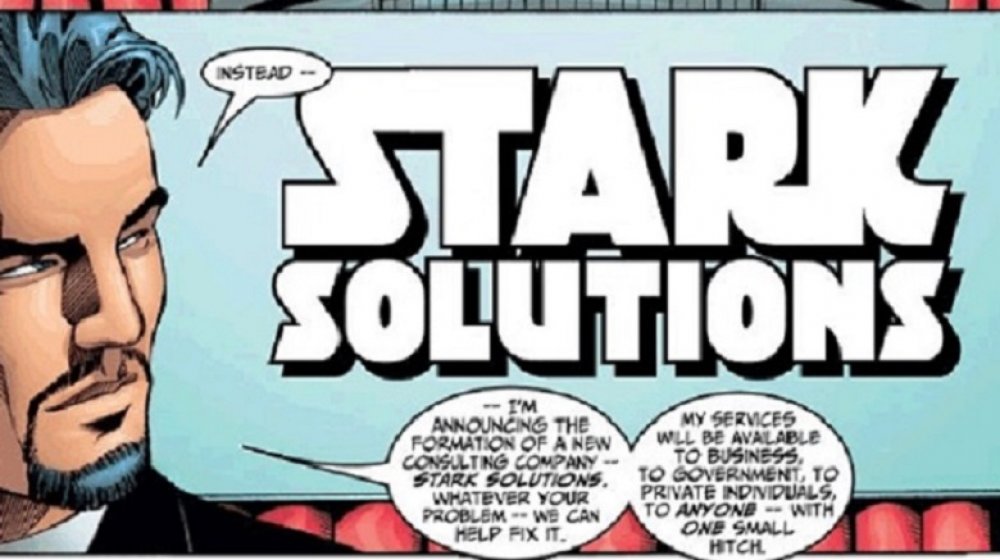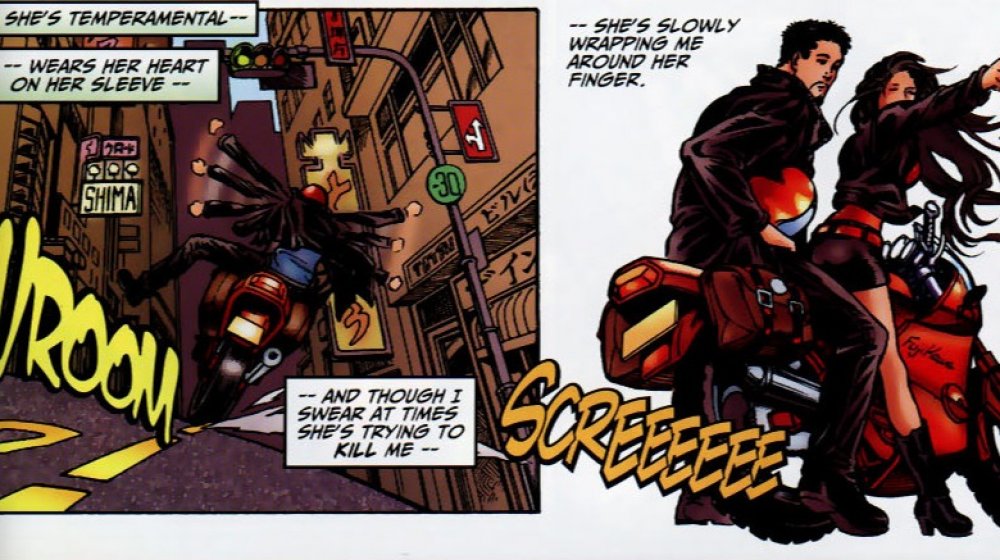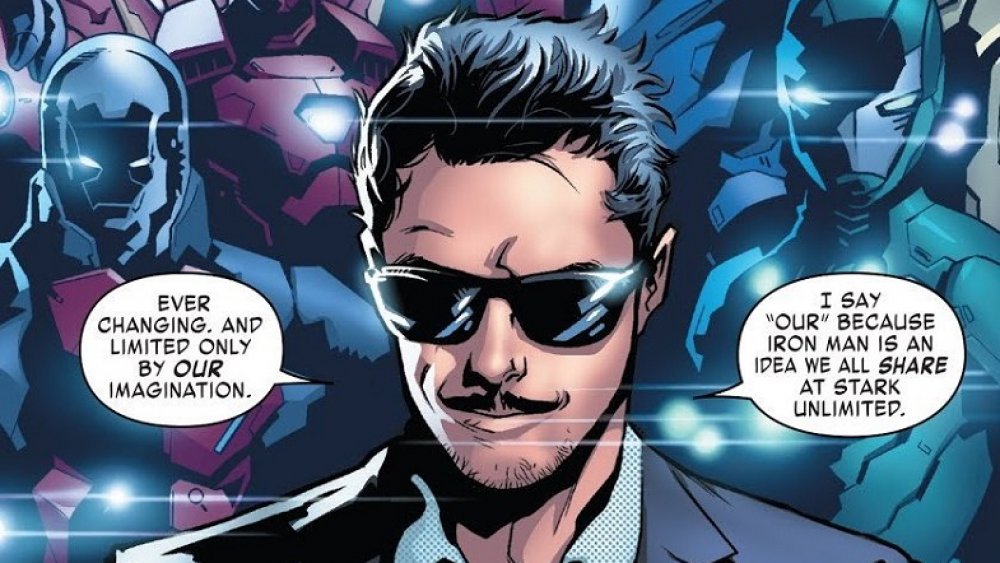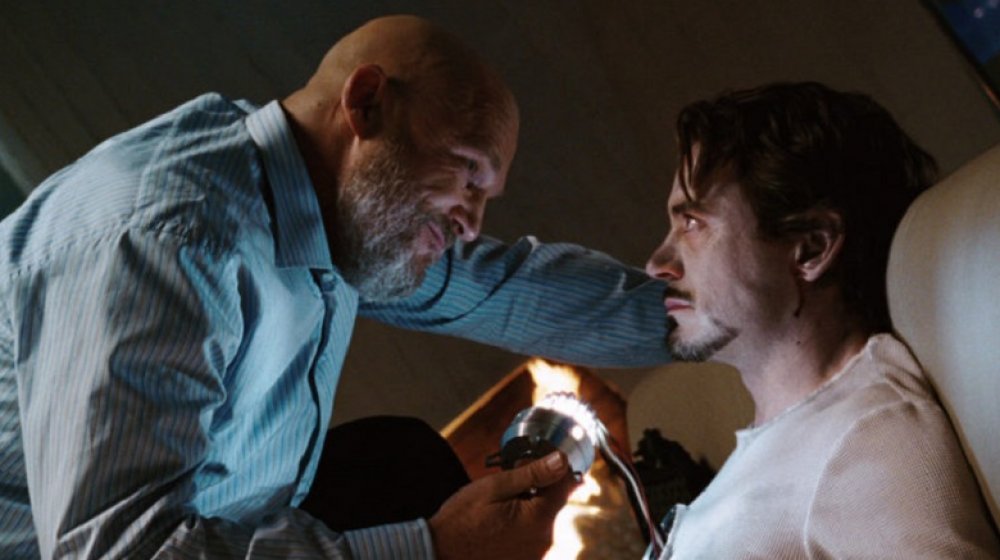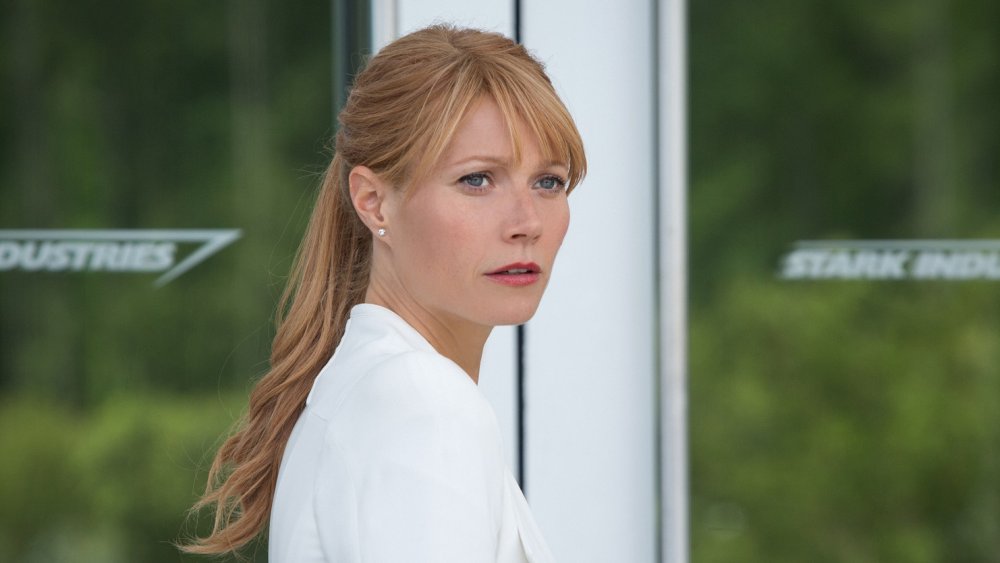The Untold Truth Of Stark Industries
Tony Stark's greatest power isn't the technology he invented with his suit of armor but rather his business acumen. Though Stark Industries dates back to the 19th century, Tony brought the company to new heights. Then he managed to wreck it. Then he started a new one and eventually wrecked that one too.
That said, you can't keep Tony Stark down for long. Even without his familial resources, the sheer power of his inventive brain and his ability to stay ahead of the technological curve mean that Tony will find a way to make a billion dollars working in his garage. So naturally, the best Iron Man creative teams, like David Michelinie and Bob Layton or Len Kaminski and Kev Hopgood, were every bit as interested in Tony Stark's day job as they were in his gig moonlighting as a superhero. And by focusing on the details of Stark Industries and Tony's genius, these writers were able to create some incredible stories, a diverse supporting cast, and a lot of cool technology.
So let's explore the highs and lows of Tony Stark's assorted business ventures over the years, along with the people who helped make him successful. From the comic books to the Marvel Cinematic Universe, this is the untold truth of Stark Industries.
Stark industries is a family business
Isaac Stark Sr. founded Stark Industries in the 1800s, establishing the influence of the Stark family right at the dawn of the Industrial Revolution. From the very beginning, the Starks were interested in weapons and security in order to create insurmountable advantages for their customers. Tony's father, Howard Stark Jr. (pictured), expanded the company further. Sure, he still made most of his money selling weapons, but he added robotics and a Bell Labs-style penchant for experimentation for its own sake.
Howard was a forward-thinker and patriot who wanted to give the US a leg up on their enemies. In the older continuity of the series, this meant going up against the Soviet Union during the Cold War. Later on, this just meant facing international terrorism in general. In either case, HYDRA was often a viable stand-in as this kind of world-beating enemy. In order to combat the supervillain group, Howard helped found S.H.I.E.L.D., built their Helicarrier, and armed the spy organization.
Not all of Howard's ideas were great ones, however. For example, as part of Project Tomorrow, he created two robots that he dubbed "Arsenal," which would keep on fighting if the US lost world War II. The problem came when one unit, which was stored under Avengers Mansion, was accidentally activated and went to war with our heroes. So yeah, even with Howard in charge, Stark Industries was prone to making murder bots that try to wipe out the good guys.
Stark Industries during the Cold War
In the '60s run of Iron Man, Tony Stark was the quintessential Cold Warrior. While most of the Marvel heroes fought communist supervillains from time to time, Iron Man had the Titanium Man, the Red Barbarian, the Actor, the Black Widow, and many others. In fact, Tony was working actively with S.H.I.E.L.D. agents like Jasper Sitwell to build weapons and fight both international espionage and organized crime ("the Maggia").
What sort of things did Tony invent? Well, there was a flesh-healing serum, a disintegrator ray, an anti-gravity ray (the Black Widow stole that one), and a mini-submarine designed to evade torpedoes. Best of all were his jet-powered roller skates, which he proposed to give to the infantry so they could march without having to expend any energy. Tony was so into roller skates that he incorporated them into his armor. Alas, there never was a roller blade update in later years.
But even though he fought for truth, justice, and the American Way, Tony rarely held grudges against his enemies. For example, after defeating Anton Vanko, the first Crimson Dynamo, he tricked him into defecting to the US and working for him. Experts in electricity don't grow on trees, after all. So whether he was creating new inventions or converting bad guys to the American cause, Tony was always fighting for the flag (and Stark Industries, of course).
Stark International and a crisis of conscience
In the '70s, with anti-war sentiment in the air, it's not surprising that the Cold War angle for Iron Man was dropped. While the series went through a score of writers during the first half of the decade and the stories suffered as a result, a few interesting things happened. Instead of Soviet villains like the Titanium Man, Iron Man now faced American revolutionaries like Firebrand. While his anti-war arson was portrayed as extreme, Tony found himself increasingly unable to argue against his ideas.
So Tony unilaterally decided that Stark Industries would no longer sell arms or munitions to anyone, including the US government. Then he renamed his company Stark International, focusing on spreading technology across the world. This had two effects. First, the government got really mad at him. Second, his slimy competitors like Edwin Cord, Justin Hammer, the Brand Corporation, and Roxxon Oil stepped in to sell arms to pretty much anyone. At one point, Nick Fury led a charge to acquire Stark International (which was one of the things that drove Tony to alcoholism), but that was staved off.
Interestingly, this was the era where, behind writers like Bill Mantlo, David Michelinie, and Bob Layton, the day-to-day workings of Stark International became part of the comic. After years of the supporting cast being Happy Hogan and Pepper Potts (or whoever Tony's love interest was at the time), the book added key characters like affable pilot Jim "Rhodey" Rhodes, hard-bitten executive secretary Bambi Arbogast, and troubled security chief Vic Martinelli.
Down the drain with Stane
When he took over the series, writer Denny O'Neil felt like Tony Stark had beaten alcoholism way too easily. And a lot of stuff that David Michelinie and Bob Layton had emphasized, like Stark's playboy lifestyle, were things that O'Neil didn't like about the character. In fact, he went as far as saying, "I hated the b*****d," and that Tony's story should be one of redemption.
As a result, we got the tale of Obadiah Stane, a story about an intelligent opponent sizing up his foe and striking at his weaknesses. In this storyline, Stane deduces that Stark is an addict. He occupies Iron Man with a bunch of chess-related villains known as the Chessmen (a little on the nose there) and sets Tony up with Indries Moomji as his new love interest, although she's secretly the Queen of the Chessmen. She has special pheromones that make her irresistible, and she pushes Tony into making some really bad decisions. However, Stane knows that as an alcoholic, at some level, Tony wants to engage in self-destructive behavior. Eventually, Tony goes into debt, Stane buys those debts up, and he soon has a controlling interest in what's now Stane International.
After a long, hard road where he gives the Iron Man armor to Jim Rhodes, Tony fights his way back and does what he does best — starting over by betting on his own ingenuity. Along with Rhodey and other former Stark employees, they co-found a small tech firm called Circuits Maximus. And when Stane tries to destroy him, Tony builds a new suit and handily defeats Stane and his Iron Monger armor. After the battle is done, a defeated Stane kills himself.
Cleaning up after Justin Hammer
After the death of Obadiah Stane, Tony founds a new company called Stark Enterprises and restores a lot of the glitz and glamor to his lifestyle. He builds a big, fancy house on the coast and doubles down on his playboy lifestyle — minus the drinking, of course. However, the upbeat flash of the series was there to provide a counterpoint to a number of darker storylines. For example, at one point, a jealous girlfriend shoots him, leaving Tony paralyzed from the waist down. Fortunately, he solves the problem by developing a bio-chip that allows him to walk again.
And if things are stormy in Tony's personal life, things are equally treacherous in Tony's professional life. He soon learns that his old enemy, Justin Hammer (pictured), bought control of Stane International when Stane killed himself. Fortunately, Tony manages to outwit Hammer and forces him to sell his old company back to him for a dollar. However, it's a dubious acquisition, as both Stane and Hammer were up to their eyeballs in illegal activities, which Tony inherits and has to deal with. Several heroes confront him on this when it's all leaked to the press, and Tony responds with an innovative plan of unprecedented corporate transparency. Real-life billionaires, please take note.
The era of Stark-Fujikawa
After Tony is mind-controlled, killed, and then replaced by a teen version of himself (don't ask), he comes back fully healthy after the "Heroes Reborn" event. However, his company has been sold to the Fujikawa family of Japan and renamed Stark-Fujikawa. This is an example of storylines set in the future informing the past, as Stark-Fujikawa was a big company in the Marvel 2099 comics imprint.
Anyway, when Tony returns and re-establishes his identity, he creates Stark Solutions rather than immediately trying to reacquire his old company. His new enterprise is designed to troubleshoot for other firms, but that never quite gets off the ground. And things get a little messy when he starts dating Rumiko Fujikawa, but Tony tries to keep business out of their relationship for a while. However, he ends it when he realizes he doesn't want to endanger her life by mixing her up with Iron Man's enemies.
But hey, when it rains, it pours. On top of losing his girlfriend, Tony's reputation is soon smeared by his former friend, Tiberius Stone. Disgraced, Tony quits his corporate life, dismantles Stark Solutions, and gives all his money away to the Maria Stark Foundation.
Tony returns to Stark Industries
After the failure of Stark Solutions, Tony enacts one of his more bizarre plans. He quietly becomes a humble worker at Askew Electronics named "Hogan Potts." Using Askew's special liquid S.K.I.N alloy, he goes after a bunch of his foes before learning that Ultron is corrupting his tech, so Tony abandons it after defeating the Evil Undying.
Speaking of old tech, Tony starts seeing it pop up around the world, as he learns the US government has appropriated it. While dealing with that, he starts dating Rumiko Fujikawa again, and he also restarts Stark Enterprises thanks to a plot device an old friend named Trevor Donahue, who conveniently dies and leaves Tony his fortune. But eventually, Rumiko learns Tony's secret identity, and she realizes this is why he broke up with her in the first place.
So that's when Rumiko implores her dad to give Tony 49 percent of the shares in Stark-Fujikawa. She retains two percent control ... and then promptly sells it to Tony. So this means Tony now owns all his original properties: Stark Industries, Stark International, and Stark Enterprises. Sadly, Rumiko is killed soon afterwards, but hey, at least Tony solves his problems with the government "borrowing" his tech by becoming secretary of defense for a while.
Tony tries and tries again
A recurring theme for Tony Stark in recent years is that when he forms a new company and everything seems peachy, disaster will strike his new venture. For example, just when everything seems to be going Tony's way with Stark Enterprises, the Scarlet Witch loses her mind and forces Tony to kill an ambassador from Latveria. Unsurprisingly, Tony resigns as secretary of defense ... and then a whole bunch of other bad things happen, like a Skrull invasion and Tony hunting down superheroes in the Civil War. With chaos enveloping him and the government after him, he appoints Pepper Potts as CEO of Stark Industries and gives her the directive to sell off all assets.
Tony eventually bounces back and opens up Stark Resilient, a name that reflects his unwillingness to back down. Then he quickly turns it over to Pepper yet again after the Mandarin starts threatening his friends. Things get even crazier when Tony is turned evil by a magic spell. This new version of Tony brings back Stark Industries and injects dangerous nanotechnology into every citizen of San Francisco. It takes the end and rebirth of the universe to undo this particular corporate direction.
His most recent project is Stark Unlimited. The concept here is that it's a think tank solely for future technologies and an expanded lab for new armor. Along the way, Tony absorbs all of his old companies yet again, making them subsidiaries. How could things go wrong? Well, as it turns out, Tony was once resurrected by technology owned by his long-lost brother, which technically makes him his brother's property! Easy come, easy go.
Stark Industries in the MCU: The beginning
Things in the Marvel Cinematic Universe are so much simpler for Stark Industries. For example, the company is founded in 1940 by Howard Stark, instead of being around for nearly 200 years. Similar to the comics, Howard plays a role in forming S.H.I.E.L.D., and he's also later murdered. But instead of being killed by a Roxxon Oil assassin like he was in the comics, he's taken out by the HYDRA-controlled Winter Soldier in 1991.
Tony (Robert Downey Jr.) is still in college when his dad is murdered, but he soon takes over the company. Ever the arrogant playboy, Tony is bored with the day-to-day details of running a gigantic corporation. By the time we see Tony for the first time in 2008's Iron Man, he's almost 40 years old but still living that carefree lifestyle.
At this time, Stark Industries is selling serious weapons to the military, and since he's preoccupied with his own celebrity, Tony leaves all the business details to Obadiah Stane (Jeff Bridges), who served as interim CEO until Tony turned 21. Obadiah is a father figure for Tony, and in many ways, he's much warmer to Tony than Howard was. Of course, this is all an act for Obadiah, as Tony is only as useful to him as his ideas. But this duplicitous relationship is what eventually gives birth to Iron Man.
Always a showman, Tony goes off to the desert to display his newest weapons to the military. And of course, he's kidnapped by a terrorist organization called the Ten Rings. While in captivity, he sees the terrorists using weapons purchased from Stark Industries, and this totally reshapes the billionaire's worldview. Tony eventually builds an Iron Man prototype and escapes, but after witnessing the destruction committed via his creations, Tony shuts down all weapons sales at his company.
Needless to say, this does not go over well with Stane. Not only is this guy a super greedy businessman, he's also the dude who hired the Ten Rings to kill Tony in the first place, as he resents Stark's position as CEO. Eventually, this leads to a big robo-battle between Iron Man and Iron Monger, and when Stane is finally defeated, it's Tony alone who's calling the shots ... for a little while.
Stark Industries in the MCU: The later years
Even after the death of Obadiah Stane, there are plenty of people still mad at Tony Stark for refusing to sell weapons. Much like in the early days of the comics, Senator Harrington Byrd (Garry Shandling) harasses Tony about arms sales. Then, when Tony impulsively reveals that he's Iron Man at the end of the first movie, Byrd demands access to the armor. Of course, the fact that he's a HYDRA operative has something to do with this. But fortunately for Tony, neither the government nor his competitors — like the incredibly slimy Justin Hammer (Sam Rockwell) — are ever able to develop tech to match Stark's.
Of course, the smartest decision Tony ever makes is appointing Pepper Potts (Gwyneth Paltrow) as CEO of Stark Industries after he realizes he's dying of palladium radiation poisoning. Actually, the smartest decision he makes is not trying to get his old position back. Tony is a genius inventor and problem solver but an indifferent administrator. So even with Aldrich Killian trying to move in during Iron Man 3 and with Tony's death at the end of Avengers: Endgame, Stark Industries still exists, thanks to the super capable Potts running the show.
